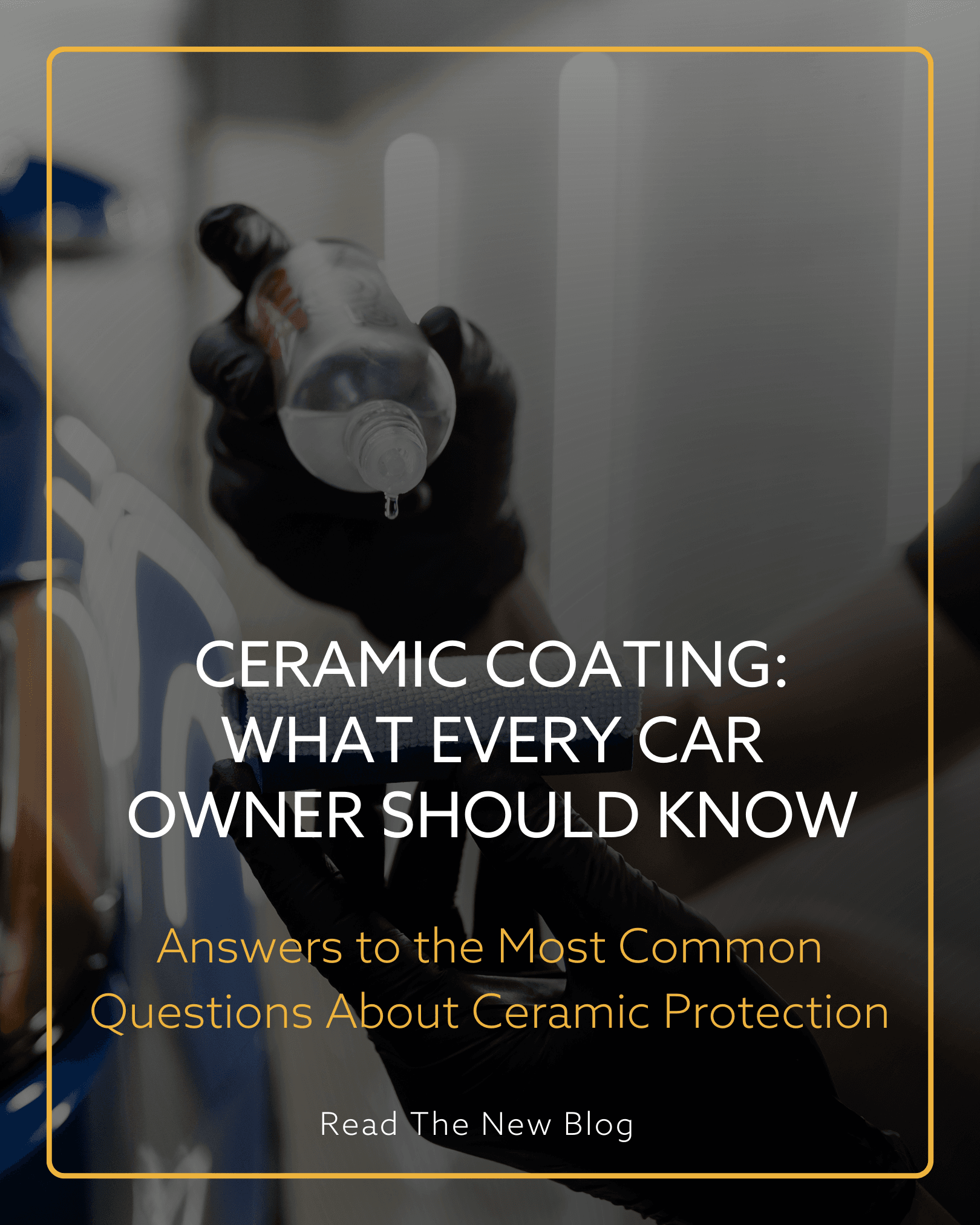
If you’re curious about ceramic coatings for your car but unsure where to start, you’re not alone. We’ve put together answers to some of the most common questions car owners have—no jargon, just simple explanations to help you make an informed decision.
A ceramic coating is a hard, transparent layer applied to your car’s paint. Made from silica (SiO₂) suspended in a resin, it cures when exposed to air and forms a protective layer—think of it like a laminate for your car’s exterior.
It helps guard against minor scratches, UV damage, bird droppings, and other environmental contaminants. High-quality coatings are also hydrophobic, meaning water beads up and rolls off easily. While it adds significant protection against everyday wear, it won’t prevent damage from major impacts or deep scratches.
Want to see what high-quality coatings look like? Explore ceramic coatings for cars here.
Yes—reputable brands do include graphene in their formulas. However, simply listing graphene doesn’t guarantee performance. Quality coatings properly disperse graphene nanoparticles throughout the formula, which enhances hardness, chemical resistance, and durability.
Poor-quality products may use cheap graphene oxide powder that settles in the bottle, indicating poor integration. When done correctly, graphene-infused coatings remain clear and improve both performance and appearance.
Ceramic coatings are unlikely to burn your skin, though uncured product may cause mild irritation—so wash it off promptly if contact occurs.
As for your car’s paint, ceramic coatings are chemically stable and won’t react dangerously with the surface. However, damage can occur from improper application—such as using a heat lamp too close during curing, or creating friction burns during polishing. These issues are related to technique, not the product itself.
Ceramic coatings outperform wax in nearly every category:
While wax is easier to apply, it needs frequent reapplication and offers less protection.
The main reason is practicality. Applying a ceramic coating requires thorough prep, hand application, and time to cure—none of which fit easily into high-volume production lines.
Manufacturers use clear coats for basic protection, but these don’t offer the long-term benefits of a true ceramic coating. Ceramic coatings appeal more to car enthusiasts and those looking for added protection and visual enhancement.
Ceramic coatings offer:
Graphene-infused coatings may offer even greater durability and chemical resistance.
Technically yes, but it’s not recommended. Wax won’t bond properly and may diminish the performance of the coating.
Instead, use maintenance products designed specifically for ceramic or graphene coatings. These help preserve the hydrophobic effect and overall protection, keeping your car looking its best.
Here’s what to think about:
Ready to find the right coating for your car? Shop our professional and DIY ceramic coatings here.

Watch as water beads off the deck with our super hydrophobic coatings.

Protect the paintwork from UV damage and keep its vibrant colour despite the conditions.

Let the fear of a rough docking be a thing of the past with a 10H coating.

With minimal maintenance, our products are guaranteed to provide protection for years to come.

With our chemical and contaminant resistant coating, the surface is kept clean. Needing only minor occasional maintenance.

Trusted in 70+ countries, Onyx Coating is the top choice for professionals and car owners seeking premium protection.

Our ceramic coatings adhere to the surface making it resistant to corrosion and oxidation and contamination-free.

Bonds tight with the surtace to maintain a uniform cover and protect the surface evenly.
If you are interested in our products or keen to work with us, send us a message and we will get in contact with you to schedule a quick call or contact us via our email info@onyxcoating.com
Once this information has been received our team will review the accounts and get into contact with you.
With the world’s first N1 nano coating product under our name, we are one of the most advanced automotive protection providers in the market.
Sign up for the latest offers & promotions




© ONYX COATING 2025. All Rights Reserved.